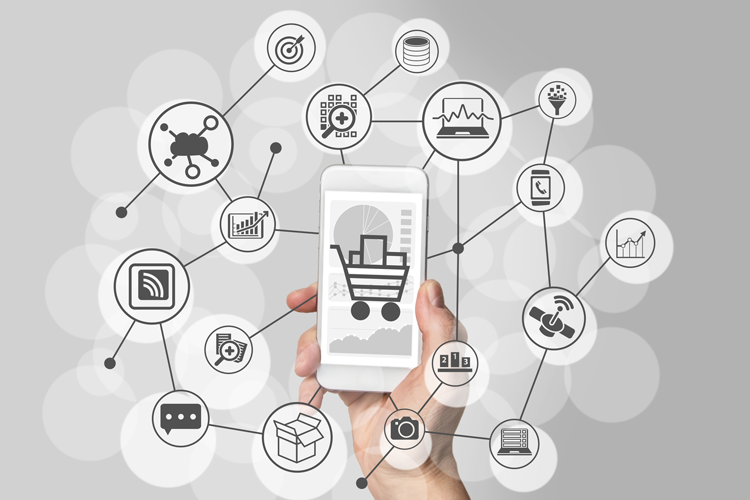As technology becomes more powerful, it is strongly altering buying behaviour and expectations of consumers. Instead of creating a user experience (UX), we are now focussing on designing a consumer experience (CX), based on creating experiences throughout the (digital) retail chain by exceeding expectations.

The consumer is king. This finding is all the more true today, seeing as consumers find themselves in the centre of communication between brands. The rules of the game have been rewritten by the results achieved by numerous successful companies, such as Uber and Airbnb, whose strategy and business model are focussed on consumers. Consumer expectations have changed, and so has our buying behaviour, due to the ever more powerful technology now enabling consumers to stay connected to the Internet at all times.
Digital strategists used to meticulously plan and measure consumer experience through digital channels, while planning websites and other platforms based on predictions; nowadays, the reverse engineering method is increasingly being used. Said method allows us to see through the eyes of the consumer in order to determine how to add value to a service or product throughout the (digital) retail chain.
Instead of creating a user experience (UX), we are now focussing on designing a consumer experience (CX), based on creating experiences by exceeding expectations. How can we achieve that? By placing the consumer at the centre of our business processes and focussing on satisfying their needs and wishes every time we come into contact with them throughout the purchasing process, thus achieving the best conversion rates. By creating a surplus, we transform consumers into brand ambassadors who are happy to share the positive experience with their friends (through word of mouth).

Transforming user experience into customer experience
When designing a user experience, the main goal is to achieve smooth interactions. Understanding the task of the user and of the process is of key importance when developing an interface that is simple to learn and easy to use.
However, modern consumers are looking for much more than just an impeccable user interface and a functional product. From brand visibility, product or service quality, purchase, delivery, billing, customer support, through relationship management, they are hoping for an above-average user experience.
Technical principles and methods of the user experience that used to be strictly a domain of the design area are now being used in order to chart and ameliorate the user experience as a whole. Understanding the consumers’ points of contacts, processes, and communications is therefore of key importance for their identification and amelioration.

A better consumer experience translates to better business results
The successful implementation of consumer-centric strategies brings about an ameliorated consumer experience, thus creating competitive advantages for the company. In all branches of the industry, satisfied consumers spend more money and express their loyalty to brands more often, thus creating conditions enabling companies to generate lower costs and more motivated employees.
In this dynamic of creating both value and sustainable competitive advantage, digital services and actions have turned out to be the main factor in creating the user experience in basically all branches of the industry.
Primarily digitally-oriented companies such as Amazon, Apple, Uber and Airbnb are constantly adapting and developing simple, immediate, and individually tailored experiences, while in the field of traditional branches, B2B companies are also bravely paving the way towards building dynamic digital ecosystems based on the needs of consumers.

The digital component of the consumer experience
The consumer experience (CX) is a quite broad concept covering all traditional and digital communications channels used by people in order to communicate with companies or brands.
When we talk about digital consumer experience (DCX), we talk about using technology and digital channels in order to reach the consumer, which includes digital services available to consumers, back-log optimisation processes, and the ways in which the company is functioning, which are, after all, useful for consumers.
The digital consumer experience is therefore the sum of all digital interactions between a consumer and a brand, the result of which is a final impression the brand makes on the consumer.
Common characteristics of consumer experience and digital channels
Digital innovations and technologies have an important influence on the ways in which consumers communicate with brands and in which they require their services to be performed. More than 60 per cent of consumers communicating through several digital channels expect their experience to be consistent, regardless of the channel, time, place, device, or medium.
On digital channels, points of contact are designed to complement one another, which makes it possible for the consumers to switch between channels without having to repeat information. Furthermore, the consumer can simultaneously use several channels. Companies are therefore recommended to understand the entire purchasing journey of its consumers in order to identify and constantly monitor points of contact between the consumer and the offer which, in turn, makes it possible for them to provide an even better consumer experience on different digital points of contact, thus using the right technology at the right time and on the right place, and increasing their cooperation with consumers.

Each point of contact is a conversion opportunity
Our study “The Purchasing Journey of a Slovenian Consumer” that we conducted in 2017 in participation with the Valicon Research Company showed that digital channels are an important factor throughout the purchasing process: they provide incentive and enable research, purchase, and post-purchase behaviour, i.e. sharing information.
Rare are the branches where services or products are only bought offline. Nowadays, modern marketing must be well-acquainted with the wishes of its consumers, the content they’re discussing and are interested in, and their expectations at every step of the purchasing journey, in order to be able to build successful long-term relationships with their consumers.
By accurately defining target groups and adapting to each one of them, they add value to their services and products. As an example, we can take a look at Airbnb: the company is actively transforming tourism with its integrated approach and commitment to its motto, “Don’t go there. Live there”. Their platform is based on trust and relationships between guests and hosts which not only enables accommodation at affordable rates, but also builds on trust and experiencing local culture. An example of this motto is the “Airbnb Trips” incentive, enabling the user to explore and reserve trips or even workshops offered by hosts.
Airbnb also successfully integrated different maintenance services, evaluation and personalisation tools into the platform. Services which can be accessed by the user are logically disposed throughout both visually and functionally extremely simple platform which also provides a high-quality digital user experience with its system of rating guests and hosts. When we put all this together, the results are exceeded customers’ expectations and good relations between them and the brand. Therefore, the tactics such as personalisation, user experience rating, and updated two-way communication are becoming increasingly important.
Companies need to start thinking about how to redefine their true value in the eyes of consumers, and how to use technology in an intelligent way in order to build said competitive differential advantages. In other words, how to become a “market maker” instead of a “market taker”. The potential for growth and successful sales results is, namely, hiding in innovation at every point of contact.
